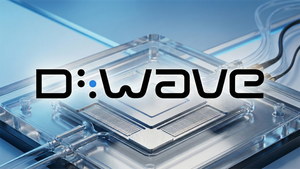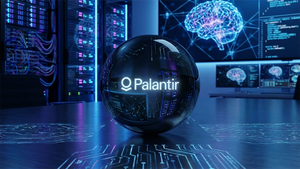
In a groundbreaking leap for global health security, the Defense Advanced Research Projects Agency (DARPA) officially launched its Network of Optimal Dynamic Energy Signatures (NODES) program in July 2025. This ambitious initiative is poised to fundamentally transform humanity's defense against future pandemics and biowarfare threats by leveraging advanced artificial intelligence to predict the function of virtually every known protein. The program's immediate implications are profound, promising to accelerate threat assessment, countermeasure development, and establish an unprecedented early warning system for biological dangers.
The NODES program represents a critical strategic pivot towards proactive biodefense, moving beyond reactive responses to emerging pathogens. By integrating cutting-edge AI with biophysical analysis, NODES aims to decipher the complex movements and structural changes of proteins – the fundamental molecules governing disease spread and biological responses. This capability is expected to dramatically enhance our ability to identify and characterize novel biological threats, whether naturally occurring or synthetically engineered, thereby safeguarding public health and national security on an unprecedented scale.
Unpacking DARPA's NODES: A New Era of Biodefense Intelligence
The DARPA NODES program, officially unveiled in July 2025, is designed to revolutionize the way the scientific community and defense agencies understand and respond to biological threats. At its core, NODES employs sophisticated AI algorithms to analyze the dynamic behavior of proteins, capturing their movements and shape changes to make high-confidence predictions about their functions. This is particularly crucial for the vast majority of proteins for which only sequence and structural data are available, allowing for rapid functional annotation even for previously unknown molecules. A key objective is to estimate the evolutionary probability of protein sequences, enabling the distinction between naturally occurring pathogens and potentially engineered biothreats.
The timeline leading up to this moment has seen increasing recognition of AI's potential in biological sciences. For years, advancements in computational biology and machine learning have hinted at such capabilities, but the convergence of improved AI models, enhanced computing power, and deeper understanding of protein dynamics has made NODES a reality. The program's official launch in mid-2025 was preceded by extensive foundational research and pilot projects, with key scientific contributions from institutions like Arizona State University, where Professor Abhishek Singharoy is on special assignment with DARPA, contributing to the program's goal of predicting protein function within an hour.
Key players and stakeholders in this monumental effort include DARPA, a U.S. Department of Defense agency renowned for its pivotal role in developing breakthrough technologies for national security. Research institutions and universities specializing in biophysics, AI, and computational biology are also critical partners, providing the intellectual capital and scientific expertise necessary for the program's success. Initial reactions from the scientific and defense communities have been overwhelmingly positive, hailing NODES as a potential game-changer. While direct market reactions are still nascent, the launch signals a significant government investment in foundational biotechnologies, which is expected to catalyze innovation across the broader biotech and pharmaceutical sectors. This initiative is laying the groundwork for a universal design platform applicable to synthetic biology, disease pathway mapping, and biosecurity, creating long-term economic opportunities.
Beyond NODES, other parallel initiatives underscore the growing role of AI in biodefense. AI-driven metagenomic sequencing networks are being proposed to build nationwide early warning systems, processing vast genetic data from environmental and clinical samples to identify anomalies and track pathogens in real-time. A detailed proposal for such a system in the U.S. was published in September 2025 by Simon Grimm through the Institute for Progress, highlighting the feasibility and urgency of deploying such a network within two to three years. Furthermore, companies like Isomorphic Labs (a Google DeepMind spinoff) are leveraging AI systems like AlphaFold3 to accelerate drug discovery, aiming to design novel therapeutics more efficiently. While not exclusively for biowarfare, the rapid development of new medicines is a critical component of pandemic response and biodefense, demonstrating the pervasive impact of AI across the entire spectrum of biological threat mitigation.
Market Movers: Companies Poised to Win or Lose in the AI Biodefense Revolution
The advent of advanced AI programs like DARPA's NODES is set to reshape the competitive landscape across several industries, creating significant opportunities for some companies while posing challenges for others. The immediate beneficiaries are likely to be firms specializing in advanced AI, computational biology, and high-performance computing, as well as those involved in genomic sequencing and synthetic biology.
Companies at the forefront of AI development, particularly those with expertise in machine learning for biological data, stand to gain substantially. Firms like NVIDIA (NASDAQ: NVDA), which provides the powerful GPUs essential for training and running complex AI models, will see increased demand for their hardware from research institutions and government contractors involved in biodefense projects. Similarly, specialized AI software companies that can develop algorithms for protein folding, functional prediction, and threat detection will find a burgeoning market. Biotechnology companies that can integrate AI into their research and development pipelines, such as those focusing on novel drug discovery or diagnostic tools, will also be well-positioned. For instance, Isomorphic Labs, while a private entity and offshoot of Google DeepMind, exemplifies the kind of AI-first drug design company that could see immense success, potentially partnering with major pharmaceutical firms like Novartis (SWX: NOVN) and Eli Lilly (NYSE: LLY) to bring AI-designed drugs to clinical trials.
The expansion of AI-driven metagenomic sequencing networks will also create significant opportunities for companies involved in genomic sequencing technologies and bioinformatics. Firms like Illumina (NASDAQ: ILMN) and Pacific Biosciences of California (NASDAQ: PACB), which develop advanced sequencing platforms, could see increased demand as national biosurveillance systems are built out. Additionally, companies providing cloud computing services with robust AI capabilities, such as Amazon Web Services (NASDAQ: AMZN), Microsoft Azure (NASDAQ: MSFT), and Google Cloud (NASDAQ: GOOGL), will be crucial infrastructure providers for these data-intensive biodefense initiatives.
Conversely, companies that fail to adapt to this AI-driven paradigm shift may find themselves at a disadvantage. Traditional pharmaceutical companies that rely solely on conventional, time-consuming drug discovery methods could face increased competition from AI-accelerated rivals. Similarly, older diagnostic firms that do not embrace AI for rapid, comprehensive pathogen detection might struggle to keep pace with more agile, AI-enhanced solutions. The shift towards proactive, AI-powered biodefense could also impact companies in sectors that are heavily reliant on human-intensive biological analysis, potentially requiring them to invest heavily in retraining or restructuring their workforces to integrate AI tools. The overall biodefense market, projected to grow from USD $16.8 billion in 2023 to USD $28.0 billion by 2032, signifies a massive opportunity, but only for those companies agile enough to innovate and integrate AI into their core strategies.
Wider Significance: Reshaping Global Health, Security, and Innovation
The emergence of advanced AI programs like DARPA's NODES and AI-driven biosurveillance networks represents a monumental shift that extends far beyond immediate biodefense applications, fitting into broader industry trends of digital transformation and accelerated scientific discovery. This event underscores a global pivot towards proactive, rather than reactive, strategies in managing biological threats, which aligns with increasing investments in biotech innovation and national security. The integration of AI into such critical areas is a testament to its maturing capabilities and its potential to solve some of humanity's most pressing challenges.
The ripple effects on competitors and partners are substantial. In the pharmaceutical and biotechnology sectors, the ability to rapidly predict protein function and design countermeasures will compress drug discovery timelines, intensifying competition among R&D-heavy firms. Companies that can effectively leverage AI will gain a significant competitive edge, potentially disrupting traditional market leaders. Partnerships between AI tech giants and biotech firms will become more commonplace, as evidenced by Isomorphic Labs' collaborations with Novartis (SWX: NOVN) and Eli Lilly (NYSE: LLY). This could lead to a wave of mergers, acquisitions, and strategic alliances aimed at combining AI prowess with biological expertise.
Regulatory and policy implications are also significant. Governments worldwide will need to establish new frameworks for the ethical deployment of AI in sensitive areas like biodefense, addressing concerns around data privacy, algorithmic bias, and the potential misuse of powerful biological prediction tools. There will likely be increased government funding and policy incentives for AI-driven biodefense research and infrastructure, as nations recognize the strategic imperative of robust pandemic preparedness. The proposed U.S. metagenomic sequencing network, for instance, highlights the potential for national-level policy shifts to integrate AI into public health infrastructure.
Historically, major health crises, from the Spanish Flu to COVID-19, have always spurred innovation and policy changes. The current push for AI in biodefense can be compared to the post-9/11 surge in counter-terrorism technologies or the Cold War-era investments in scientific research. However, the scale and speed of AI's potential impact are unprecedented. This isn't merely an incremental improvement; it's a foundational shift in how we understand, predict, and combat biological threats, potentially altering the very fabric of global health security and economic stability. The global market for AI in Epidemiology alone, projected to reach US$2.6 billion by 2030, reflects this profound transformation.
What Comes Next: A Future Shaped by AI in Biodefense
The launch of DARPA's NODES program and the broader integration of AI into biodefense herald a future with both immense promise and significant challenges. In the short term, we can expect accelerated research and development within the NODES framework, with initial breakthroughs in protein function prediction and biothreat identification potentially emerging within the next 12-24 months. This will likely involve further academic and industry collaborations, as DARPA seeks to rapidly translate theoretical capabilities into practical applications. Simultaneously, discussions around the implementation of nationwide AI-driven biosurveillance systems will intensify, potentially leading to pilot programs and increased funding allocations for such infrastructure.
Long-term possibilities include the creation of a truly global, interconnected AI-powered biosurveillance network capable of detecting novel pathogens at their source, virtually in real-time. This could dramatically reduce the lead time for pandemic response, allowing for rapid vaccine and therapeutic development, and targeted containment strategies. The "universal design platform" envisioned by NODES could also have far-reaching applications in synthetic biology, drug discovery for non-infectious diseases, and even environmental monitoring, creating entirely new markets and scientific disciplines.
Potential strategic pivots or adaptations will be required across various sectors. Pharmaceutical companies must integrate AI into every stage of their R&D, from target identification to clinical trial design, to remain competitive. Healthcare systems will need to invest in AI-literate personnel and infrastructure to leverage advanced diagnostic and predictive tools. Governments will face the ongoing challenge of balancing national security imperatives with ethical considerations and international cooperation in the deployment of powerful AI biodefense capabilities.
Market opportunities will emerge in specialized AI hardware and software, bioinformatics services, advanced sequencing technologies, and AI-driven drug discovery platforms. Companies that can provide secure, scalable AI solutions for processing massive biological datasets will be particularly well-positioned. Challenges include the high cost of developing and deploying these advanced systems, the need for robust data governance and cybersecurity, and the continuous threat of evolving pathogens that may outpace even the most sophisticated AI. Potential scenarios range from a highly secure world largely immune to pandemic-level threats, to a complex arms race where AI-driven biothreats emerge alongside AI-driven defenses, underscoring the critical importance of responsible AI development and international collaboration.
Comprehensive Wrap-Up: A New Dawn for Global Health Security
The launch of DARPA's NODES program marks a pivotal moment in the global effort to safeguard against future pandemics and biowarfare. The integration of advanced artificial intelligence into biodefense strategies is not merely an incremental technological upgrade; it represents a fundamental paradigm shift towards proactive threat detection, rapid countermeasure development, and unprecedented levels of global health security. Key takeaways from this event include the recognition of AI as an indispensable tool for deciphering complex biological systems, the significant government investment flowing into this sector, and the immense potential for both scientific breakthroughs and economic opportunities.
Moving forward, the market will be increasingly shaped by companies that can effectively harness AI for biological applications. Investors should watch for firms specializing in AI hardware and software, advanced genomics, bioinformatics, and AI-accelerated drug discovery. The pharmaceutical and biotechnology industries are poised for a significant transformation, with AI-first companies gaining a competitive edge and traditional players needing to rapidly adapt. The global biodefense market, already experiencing robust growth, is set to accelerate further, driven by both public and private sector investments.
The lasting impact of initiatives like NODES could be a world far better equipped to prevent and respond to biological threats, potentially averting future pandemics that could devastate economies and societies. However, this future also necessitates careful consideration of ethical implications, regulatory frameworks, and international cooperation to ensure these powerful technologies are used responsibly and for the benefit of all humanity. What investors should watch for in the coming months are further announcements from DARPA and its partners regarding NODES' progress, the development of national biosurveillance networks, and the continued flow of investment and partnerships within the AI-biotech nexus. The dawn of AI in biodefense is here, promising a new era of vigilance and resilience against biological threats.
This content is intended for informational purposes only and is not financial advice




